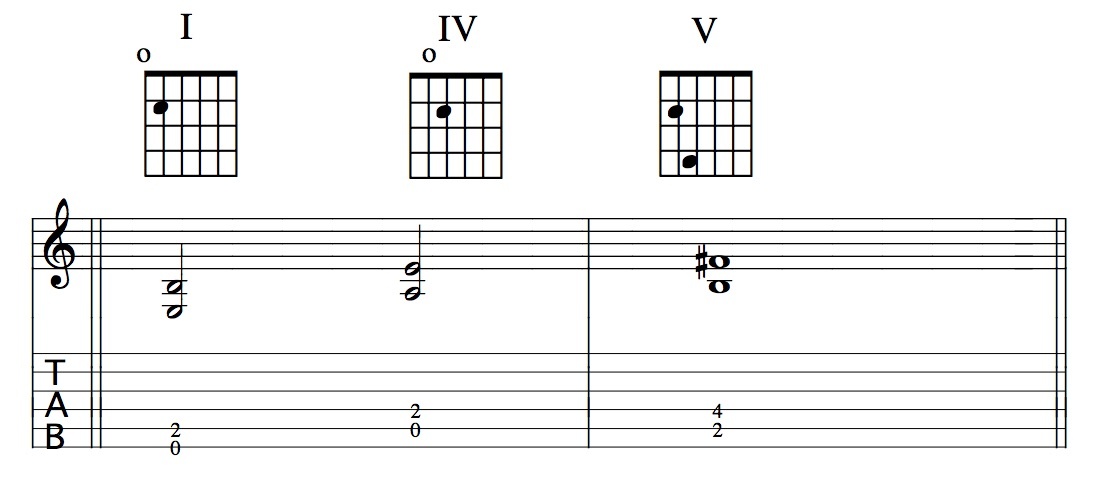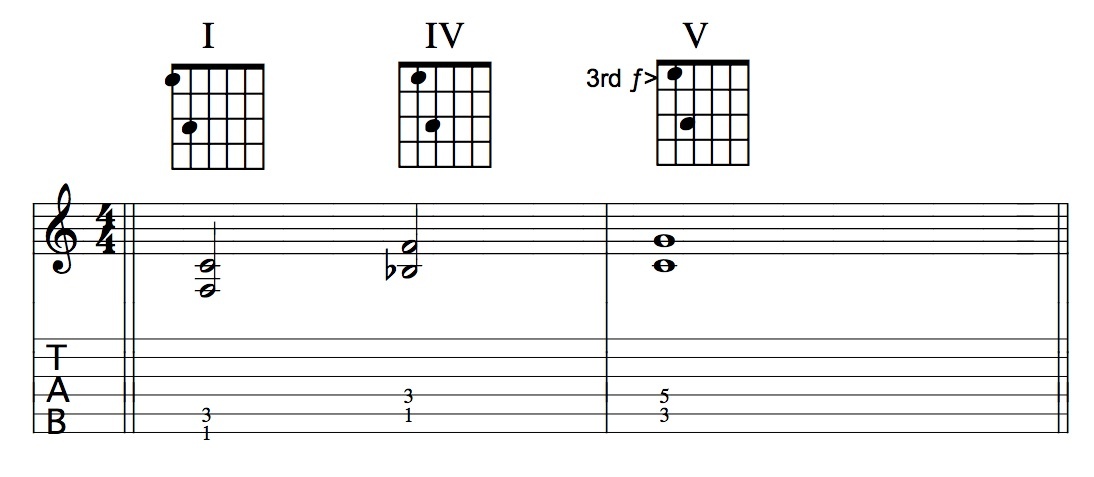1-4-5 Progression
A 1-4-5 progression is a series of chords derived from the first, fourth and fifth chords in a harmonized scale. In particular, the most common scale from which the 1-4-5 is derived is the major scale. It is the most common sequence of three chords in music.
For this introduction to the 1-4-5 progression we will focus on how to use a "map" as visualized on a guitar in standard tuning using the most basic of chords, the "power" chords. These can be played as two note chords and are particularly useful to help visualize the map.
Take a look at the image below to see what the 1-4-5 progression "map" looks like for the key of E, which is the "open" key since it utilizes open strings for a couple of the chords.

In a 1-4-5 chord progression (traditionally noted with roman numerals I, IV, V as in the two diagrams, but is also commonly shown with "regular" numbers as on this page.) you can see that the 1 chord (power chords are used here as noted above) has it's root note (E) on the open E string and the other note that fills out the power chord is on the A string. To move to the 4 chord both notes simply move to the next string over (Root moves to the A string, the other note of the A power chord moves to the D string). Then to move to the 5 chord the two notes that make up the 4 chord simply move up along the same two strings two frets.
This "map" of relative positions is a great way to start out visualizing the 1-4-5 progression because it can be used for any key by simply moving it all to the appropriate position on the neck and keep the internal relationships of the positions consistent. Take a look below at the "movable" version to see what I mean.

